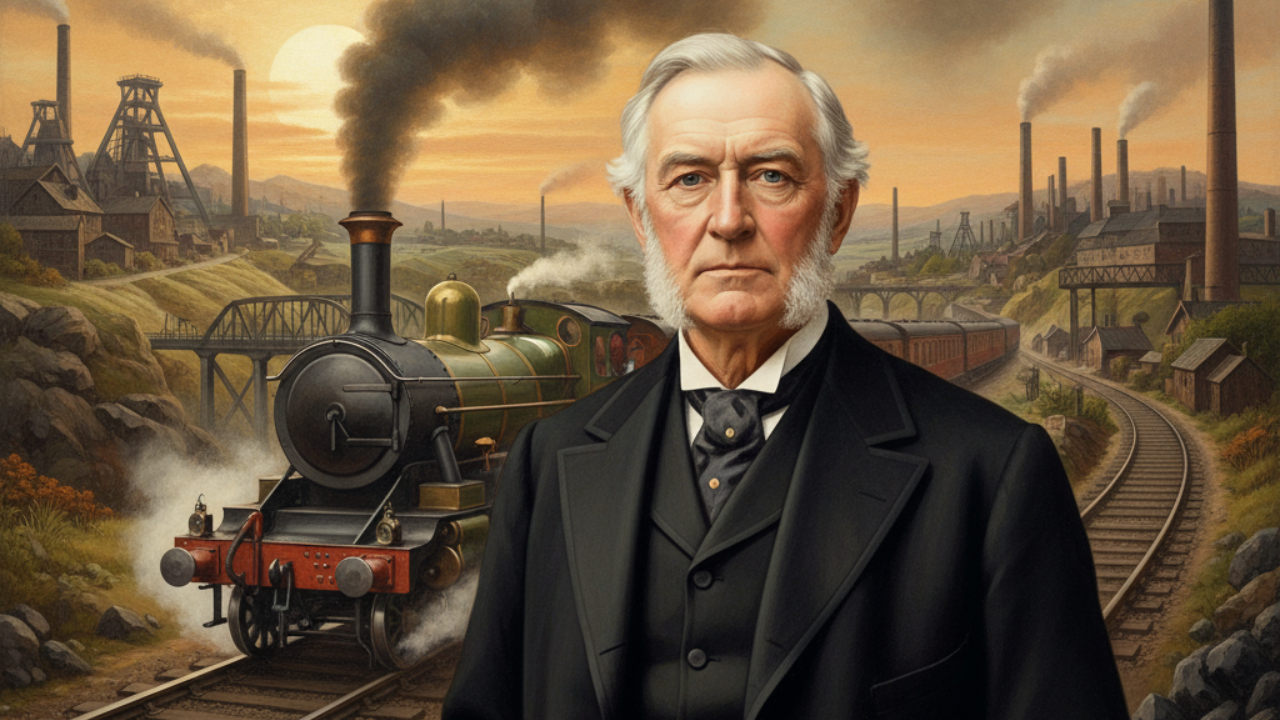
Post by : Meena Rani
George Stephenson stands as one of the most influential figures in transportation history. Known globally as the “Father of Railways,” his innovations in steam locomotive design, railway engineering, and track standardization changed how the world moved. His legacy continues to inspire discussions around topics like steam locomotive technology, railway pioneers, and the Industrial Revolution.
George Stephenson was born on 9 June 1781 in Wylam, Northumberland, England, into a poor mining family. With limited access to formal education, young George worked as a helper in coal mines and eventually as an engine man operating steam engines used to pump water. Determined to improve himself, he learned to read and write at night school. His self-taught mechanical skills and deep curiosity about machinery became the foundation of his engineering genius.
By his early twenties, Stephenson was working as a mechanic in coal mines, repairing engines and studying their design. His hands-on experience gave him the technical insight that would later revolutionize the transport world.
In 1814, Stephenson built his first steam locomotive, named Blücher, for the Killingworth Colliery. The machine could haul coal wagons efficiently over iron rails, demonstrating the potential of steam power for industrial transport. He improved upon existing designs by enhancing engine stability and traction, ensuring that the locomotive could handle uneven terrain and heavy loads.
These early trials laid the groundwork for his later work. Stephenson’s success at Killingworth led to new railway construction projects across northern England, including the Hetton Colliery Railway, which became one of the first to use locomotives exclusively for hauling coal.
Stephenson’s reputation as an engineer led to his appointment as chief engineer of the Stockton and Darlington Railway — the world’s first public railway to use steam locomotives for both freight and passengers. When the line opened in 1825, the locomotive Locomotion No.1, built by Stephenson and his son Robert, made history by hauling a train of coal wagons and passenger carriages.
This event marked the birth of the modern railway age. It proved that steam-powered rail transport could be efficient, reliable, and commercially viable. The success of the line encouraged the construction of more railways across Britain and the world.
In 1829, the Liverpool and Manchester Railway held the Rainhill Trials to determine which locomotive design would be used for the new line. George and Robert Stephenson entered their locomotive, The Rocket, which outperformed all competitors. It achieved speeds over 30 mph, a record at the time, and featured a revolutionary multi-tube boiler system that greatly improved efficiency.
The victory of The Rocket at Rainhill confirmed Stephenson’s status as the leading railway engineer of his time. The Liverpool and Manchester Railway, which opened in 1830, became the world’s first intercity railway operated entirely by steam locomotives.
One of Stephenson’s most enduring contributions was his decision to adopt a track gauge of 4 feet 8½ inches (1,435 mm), now known as the “Stephenson Gauge.” This standardization allowed trains to run seamlessly across different lines and eventually became the global norm for railway systems.
Stephenson also designed tunnels, bridges, and railway gradients that balanced cost, performance, and safety. His engineering foresight helped shape not only railways but also future infrastructure planning around the world.
George Stephenson’s success stemmed from a combination of innovation, perseverance, and practicality.
Visionary Thinking: He saw the potential for steam to transform society long before it became mainstream.
Technical Ingenuity: His improvements to locomotive design created more powerful, reliable engines.
Standardization: His gauge and construction practices set the blueprint for railway systems worldwide.
Leadership: He inspired investors, engineers, and workers to believe in his vision of connected cities and faster commerce.
Stephenson’s influence extended beyond technology — he embodied the spirit of the Industrial Revolution: progress through innovation and hard work.
Stephenson’s ideas transformed more than Britain. Railways built using his standards spread across Europe, America, and Asia, fueling industrial growth and trade. His life also serves as an example of lifelong learning and resilience — a man who rose from a humble background to become one of history’s great engineers.
Modern transportation systems, from high-speed trains to metro networks, still operate on principles Stephenson introduced two centuries ago. His emphasis on standardization, safety, and engineering precision continues to guide railway development today.
Disclaimer:
This article is for educational and informational purposes only. It is based on historical research and general knowledge. Some details may vary according to different historical sources.
George Stephenson, Father of Railways, railway pioneer, steam locomotive, Industrial Revolution, railway engineering, Stephenson gauge, Locomotion No.1, Rocket, transportation history










Advances in Aerospace Technology and Commercial Aviation Recovery
Insights into breakthrough aerospace technologies and commercial aviation’s recovery amid 2025 chall

Defense Modernization and Strategic Spending Trends
Explore key trends in global defense modernization and strategic military spending shaping 2025 secu

Tens of Thousands Protest in Serbia on Anniversary of Deadly Roof Collapse
Tens of thousands in Novi Sad mark a year since a deadly station roof collapse that killed 16, prote

Canada PM Carney Apologizes to Trump Over Controversial Reagan Anti-Tariff Ad
Canadian PM Mark Carney apologized to President Trump over an Ontario anti-tariff ad quoting Reagan,

The ad that stirred a hornets nest, and made Canadian PM Carney say sorry to Trump
Canadian PM Mark Carney apologizes to US President Trump after a tariff-related ad causes diplomatic

Bengaluru-Mumbai Superfast Train Approved After 30-Year Wait
Railways approves new superfast train connecting Bengaluru and Mumbai, ending a 30-year demand, easi